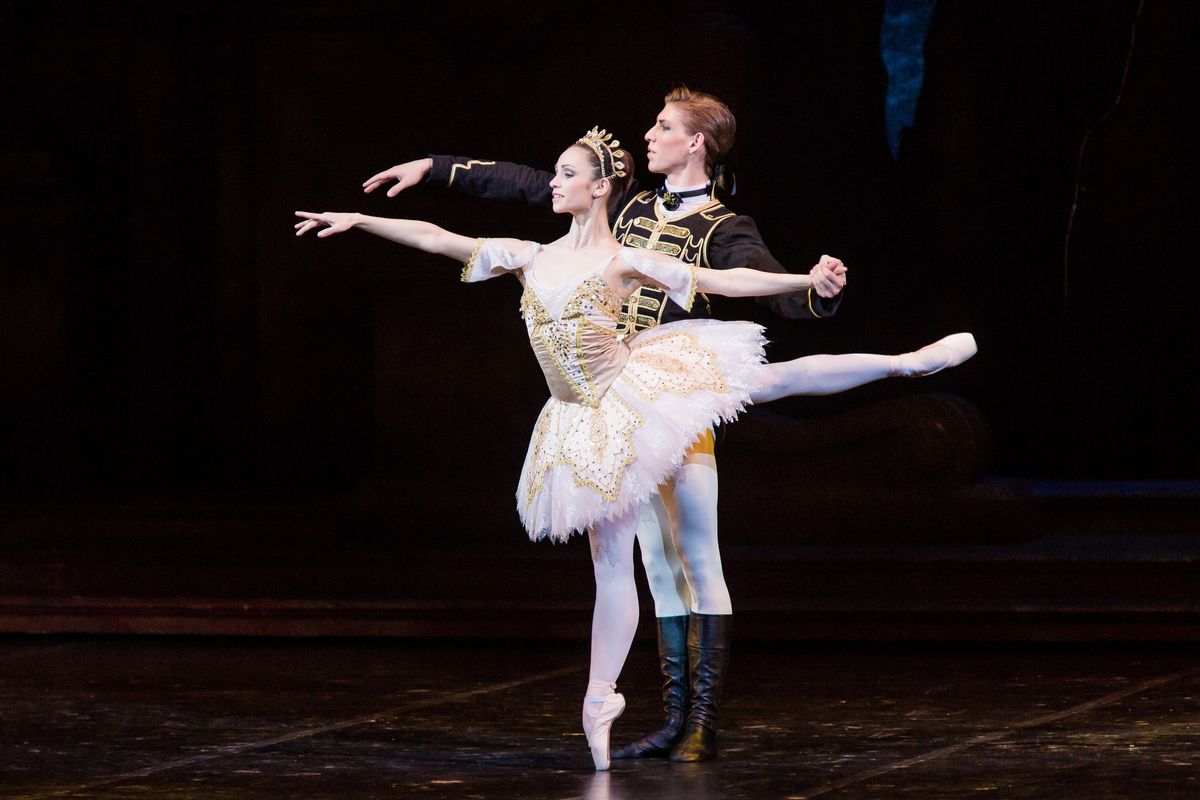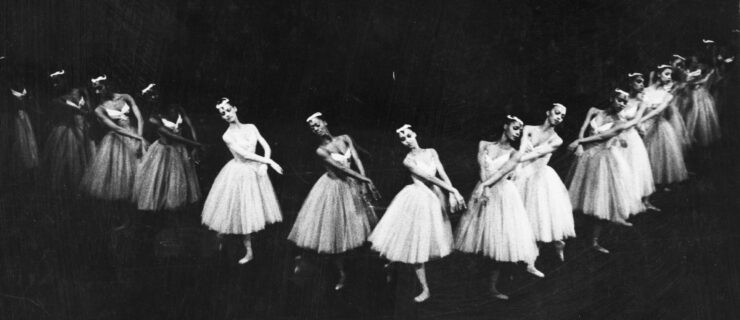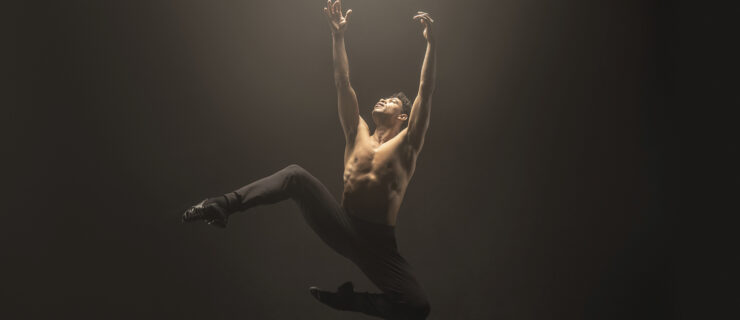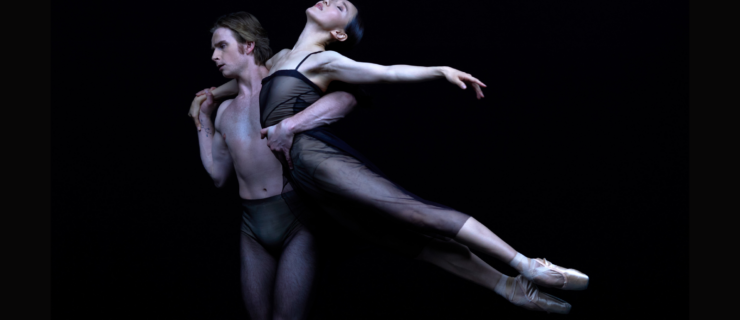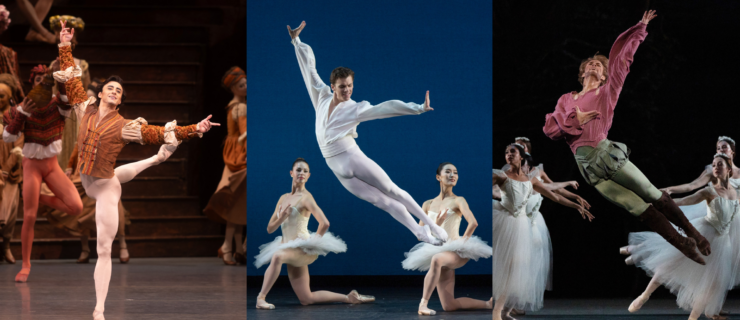Why These Rising Hungarian National Ballet Stars (And Newlyweds) Can't Wait for The Company's First U.S. Tour
As the Hungarian National Ballet prepares its first U.S. tour to New York City’s Lincoln Center this week amid a busy fall season in Budapest, first soloist Lili Felméry and principal dancer Gergő Ármin Balázsi have a lot on their plates. But adapting to the unknown is nothing new; since joining the company, both Hungarian dancers have tackled impressive lists of classical and contemporary roles. Just recently married, they’re bursting with excitement to perform in New York together, where the company is performing Swan Lake, Don Quixote and an all Hans van Manen program. Pointe caught up with the newlyweds to hear about some of their favorite onstage moments, honing the details of style, and favorite memories learning from some of the dance world’s greatest masters.
 Felméry and Balázsi in “Snow White and the Seven Dwarfs.” Photo by Attila Nagy, Courtesy Hungarian National Ballet.
Felméry and Balázsi in “Snow White and the Seven Dwarfs.” Photo by Attila Nagy, Courtesy Hungarian National Ballet.
How did the two of you get together?
Lili Felméry:
A few years ago, the company staged a new version of The Nutcracker. We were cast to dance the Sugar Plum pas de deux together, so we spent lots of time in rehearsals together. Before long, we were spending time together after rehearsals ended. The holiday atmosphere made the time especially memorable for us.
How does it feel to be back in the studio at the start of a new season?
Gergő Ármin Balázsi:
The summer was incredible, but it’s good to be back working again. We performed a premiere this fall, and I got to learn William Forsythe’s The Vertiginous Thrill of Exactitude. We also did a few pas de deux for some local tours in Hungary before coming to New York. It’s a ton of work. We have to make sure to take care of our bodies so that we don’t get injured.
Felméry:
I’ve been busy rehearsing for the New York tour this fall. I’m dancing “little swans” in Swan Lake, one of the two friends in Don Quixote, and two pieces by Hans van Manen: Trois Gnossiennes (in last’s night’s gala) and Black Cake on November 11.
You both danced principal roles with the company early on in your careers. What was that like?
Felméry:
I joined the company as a demi-soloist after graduating from The Royal Ballet School in London (I had won a Prix de Lausanne scholarship there in 2008). I had an offer in the UK but chose to go to Hungarian National Ballet, my home company, where I danced Juliet my first season. I was so grateful for those early chances because they pushed me to continue improving.
Balázsi:
Joining my home company was always a big dream for me. I entered in the corps de ballet, but danced solos during my first season. I danced so much during that first year that I barely had time to think about it. It was only that summer, when I looked back at all I’d done, that I realized how much I’d actually danced. I really admire how our director Tamás Solymosi pushes new company members with big responsibilities onstage.
 Felméry and Balázsi in “Sleeping Beauty.” Photo by Attila Nagy, Courtesy Hungarian National Ballet.
Felméry and Balázsi in “Sleeping Beauty.” Photo by Attila Nagy, Courtesy Hungarian National Ballet.
Lili, was it challenging to adjust between the styles at Royal Ballet School and at Hungarian National Ballet?
Felméry:
It took some getting used to, sure. At Royal Ballet School, I learned to prepare for a pirouette from fourth position with rounded arms, while the Vaganova-style pirouette that we learn in Budapest starts with straight arms. But the time in London was very inspiring for me; I watched company rehearsals and performances, and tried to absorb everything I could. And I think adjusting to different styles has helped me overall. In the company, we work with so many different choreographers, and it’s useful to be able to adapt.
Are the two of you dancing together in New York?
Balázsi:
Yes, we’ll dance the duet from Hans van Manen’s Black Cake. I love dancing with Lili. I feel so comfortable with her. Every time I catch her eye onstage, I relax.
Felméry:
That’s true. We don’t always get to dance together, so we always really appreciate the opportunities.
 Felméry and Balázsi in “The Fountain of Bakhchisarai.” Photo by Attila Nagy, Courtesy Hungarian National Ballet.
Felméry and Balázsi in “The Fountain of Bakhchisarai.” Photo by Attila Nagy, Courtesy Hungarian National Ballet.
Can you describe learning Hans van Manen’s style? Is it very strict?
Felméry:
I wouldn’t call it strict. There are specific hand positions, a way of turning the wrist in, and ways to direct your focus. But once you learn those details, the choreography is very comfortable. And van Manen isn’t strict at all as a person! He came to Budapest to work with us before the premiere. In rehearsal for Trois Gnoissiennes, he was so funny!
Balázsi:
He’s an old man, but he was so playful! My favorite choreography of his to dance is the solo couple in 5 Tangos. It’s really tough, stamina-wise. You have to maintain a lot of power up until the end. But it’s so energetic, and sexy. And the music is so powerful.
Are you looking forward to performing in New York?
Balázsi:
So much! I can’t wait to experience America for the first time.
Felméry:
The girls can’t stop talking about it in the dressing room!
 Felméry and Balázsi in “Snow White and the Seven Dwarfs.” Photo by Attila Nagy, Courtesy Hungarian National Ballet.
Felméry and Balázsi in “Snow White and the Seven Dwarfs.” Photo by Attila Nagy, Courtesy Hungarian National Ballet.
Have you made any plans for what you’d like to do in the city?
Felméry:
I’ll be dancing in every performance. So, between rehearsals and shows, I’m not sure how much time I’ll have. I guess I’ll have to leave it open.
Balázsi:
I’ll have a bit of free time, so I’ll try to explore and report back. I definitely want to eat all the hamburgers I possibly can!
